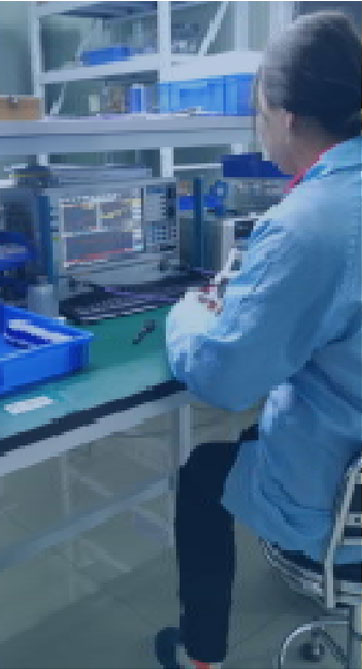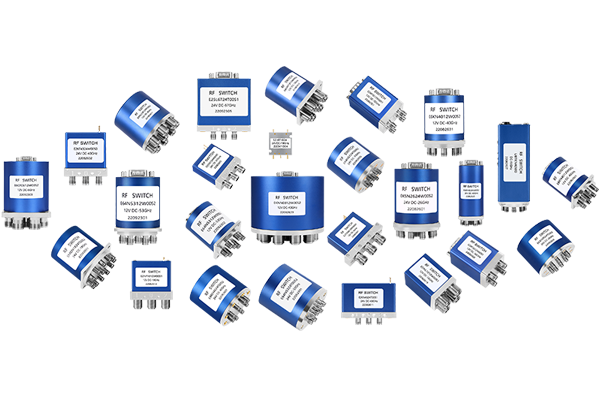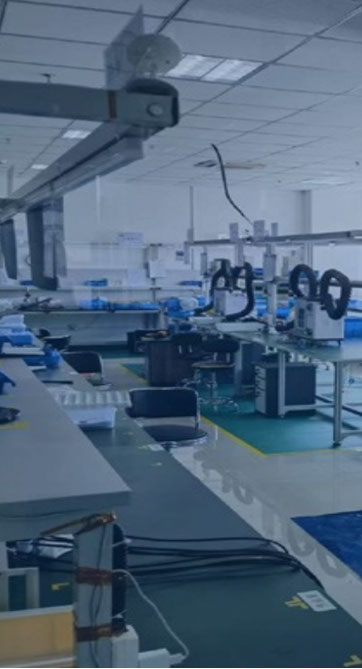
Pin diodes have become a crucial element in high-frequency systems because of their innate electrical traits Their quick conductive to nonconductive switching and compact capacitance with limited insertion loss make them perfect for switches modulators and attenuators. The primary process that governs PIN diode switching is the modulation of current by varying the applied bias. The bias voltage changes the junction depletion width which in turn influences the device conductance. Varying the bias voltage facilitates reliable high-frequency switching of PIN diodes with small distortion penalties
Precise timing and control requirements often lead to the integration of PIN diodes into intricate circuit designs They operate within RF filter topologies to control the passing or blocking of chosen frequency bands. Their competency in managing strong signals qualifies them for amplifier power splitter and signal source applications. The trend toward miniaturized highly efficient PIN diodes has broadened their applicability in modern technologies like wireless communications and radar
Coaxial Switch Design and Performance Analysis
The design of coaxial switches is intricate and needs detailed assessment of numerous variables Key factors such as switch category operating band and insertion loss shape the coaxial switch performance. Superior coaxial switch design seeks minimal insertion loss alongside strong isolation between ports
To analyze performance one must evaluate metrics such as return loss insertion loss and isolation. Performance figures are derived from simulation modeling theoretical analysis and empirical testing. Reliable operation of coaxial switches demands thorough and accurate performance analysis
- Simulation, analytical modeling and experimental testing are widely utilized to examine coaxial switch designs
- Factors such as temperature variations impedance mismatch and fabrication tolerances can impact switch behavior
- Recent advances emerging trends and novel developments in coaxial switch design focus on improving metrics while reducing size and power use
LNA Design for Maximum Fidelity
Tuning LNA gain efficiency and performance parameters is essential for outstanding signal fidelity in diverse systems It necessitates thoughtful transistor selection bias configuration and circuit topology planning. Good LNA design practices focus on lowering noise and achieving high amplification with minimal distortion. Analytical and simulation tools are vital for studying how design variations affect noise. The goal is to minimize Noise Figure, reflecting the amplifier’s proficiency in maintaining signal relative to added noise
- Selecting devices that exhibit low intrinsic noise is a primary consideration
- Setting proper and optimal bias parameters is necessary to suppress noise in active devices
- The overall noise outcome is greatly affected by the selected circuit topology
Approaches such as matching networks noise suppression and feedback loops help improve LNA behavior
Signal Path Control Using Pin Diodes

PIN diode switches serve as practical and efficient solutions for directing RF signals in many systems Their high-speed switching lets systems dynamically alter signal routing in real time. The low insertion loss and high isolation of PIN diodes help maintain signal integrity during switching. They find use in antenna selection systems duplexers and phased array antennas
The switching behavior is governed by voltage driven modulation of the diode’s resistance. When off the diode’s high resistance isolates and blocks the RF path. Introducing a positive control voltage reduces resistance and opens the RF path
- Furthermore additionally moreover pin diode switches deliver fast switching speeds low power use and compact footprints
Diverse design options and architectures for PIN diode networks allow implementation of sophisticated routing functions. Through interconnection of switches one can construct dynamic matrices for adjustable signal path routing
Evaluation of Coaxial Microwave Switch Performance

Detailed assessment and testing validate coaxial microwave switches for optimal function across electronic systems. A range of factors like insertion reflection transmission loss isolation switching rate and bandwidth affect switch performance. A comprehensive evaluation process involves measuring these parameters under a variety of operating environmental and test conditions
- Furthermore the testing should cover reliability robustness durability and resistance to harsh environmental influences
- The end result of a solid evaluation produces essential valuable and critical data to support selection design and improvement of switches for defined applications
Comprehensive Review on Reducing Noise in LNA Circuits
Low noise amplifier circuits are central to RF systems for enhancing weak signals and limiting internal noise. This survey offers an extensive examination analysis and overview of approaches to minimize LNA noise. We investigate explore and discuss chief noise sources including thermal shot and flicker noise. We further consider noise matching feedback solutions and biasing best practices to lessen noise. It presents recent developments like new semiconductor materials and fresh circuit architectures that lower noise figure. Providing comprehensive insight into noise management principles and approaches the article benefits researchers and engineers in RF system development
Use Cases for PIN Diodes in High Speed Switching

PIN diodes’ unique remarkable and exceptional behavior makes them appropriate for fast switching systems Their small capacitance and low resistance facilitate high speed switching suitable for accurate timing control. Their proportional voltage response enables controlled amplitude modulation and reliable switching behavior. Their adaptable flexible and versatile nature makes them suitable applicable and appropriate for broad high speed applications They find use in optical communications microwave circuitries and signal processing devices and equipment
Coaxial Switch IC Integration and Circuit Switching
IC based coaxial switch technology advances signal routing processing and handling in electronic systems circuits and devices. These ICs control manage and direct coaxial signal flow providing high frequency capability with low latency propagation and insertion timing. The miniaturized nature of IC technology produces compact efficient reliable and robust designs suitable for dense interfacing integration and connectivity demands
- By meticulously carefully and rigorously adopting these practices designers can deliver LNAs with excellent noise performance supporting reliable sensitive systems With careful meticulous and rigorous execution of these strategies designers can obtain LNAs exhibiting excellent noise performance for sensitive reliable systems With careful meticulous and rigorous deployment of these approaches developers can accomplish LNAs with outstanding noise performance enabling trustworthy sensitive electronics Through careful meticulous and rigorous application of such methods engineers can design LNAs with top low-noise amplifier tier noise performance enabling dependable sensitive systems
- Applications cover telecommunications data networking and wireless communication systems
- Coaxial switch IC implementations support aerospace defense and industrial automation applications
- Consumer electronics audio video equipment and test measurement instruments utilize IC coaxial switching
Design Considerations for LNAs at mmWave Frequencies

At mmWave frequencies LNAs must contend with greater signal attenuation and intensified influence from noise sources. Parasitic capacitances and inductances become major factors at mmWave demanding careful layout and parts selection. Minimizing mismatch and maximizing gain remain critical essential and important for mmWave LNA performance. Devices such as HEMTs GaAs MESFETs and InP HBTs are important selections to meet low noise figure goals at mmWave. Additionally the careful design and optimization of matching networks is essential to ensure efficient power transfer and good impedance match. Careful management of package parasitics is necessary to prevent degradation of mmWave LNA performance. Using low loss transmission lines and thoughtful ground plane designs is essential necessary and important for minimizing reflection and keeping high bandwidth
Modeling Strategies for PIN Diode RF Switching
PIN diodes function as crucial components elements and parts across various RF switching applications. Precise accurate and detailed characterization of such devices is essential for designing developing and optimizing reliable high performance circuits. It consists of analyzing evaluating and examining electrical voltage current characteristics including resistance impedance and conductance. Characterization also covers frequency response bandwidth tuning capabilities and switching speed latency or response time
Additionally moreover furthermore the development of precise models simulations and representations for PIN diodes is critical essential and vital for predicting behavior in complex RF contexts. Various numerous diverse modeling approaches exist including lumped element distributed element and SPICE models. Choosing the proper model relies on the specific application requirements and the desired required expected accuracy
State of the Art Techniques for Low Noise Amplifier Design
Designing LNAs is a crucial task requiring careful attention to circuit topology and component selection to reach optimal noise performance. Recent semiconductor innovations and emerging technologies facilitate innovative groundbreaking sophisticated design methods that reduce noise significantly.
Among the techniques are utilizing implementing and employing wideband matching networks integrating low noise high intrinsic gain transistors and refining biasing schemes strategies and approaches. Additionally furthermore moreover advanced packaging and thermal management techniques are important to lower external noise sources. By rigorously meticulously and carefully implementing these techniques practitioners can achieve LNAs with remarkable noise performance for sensitive reliable electronics
